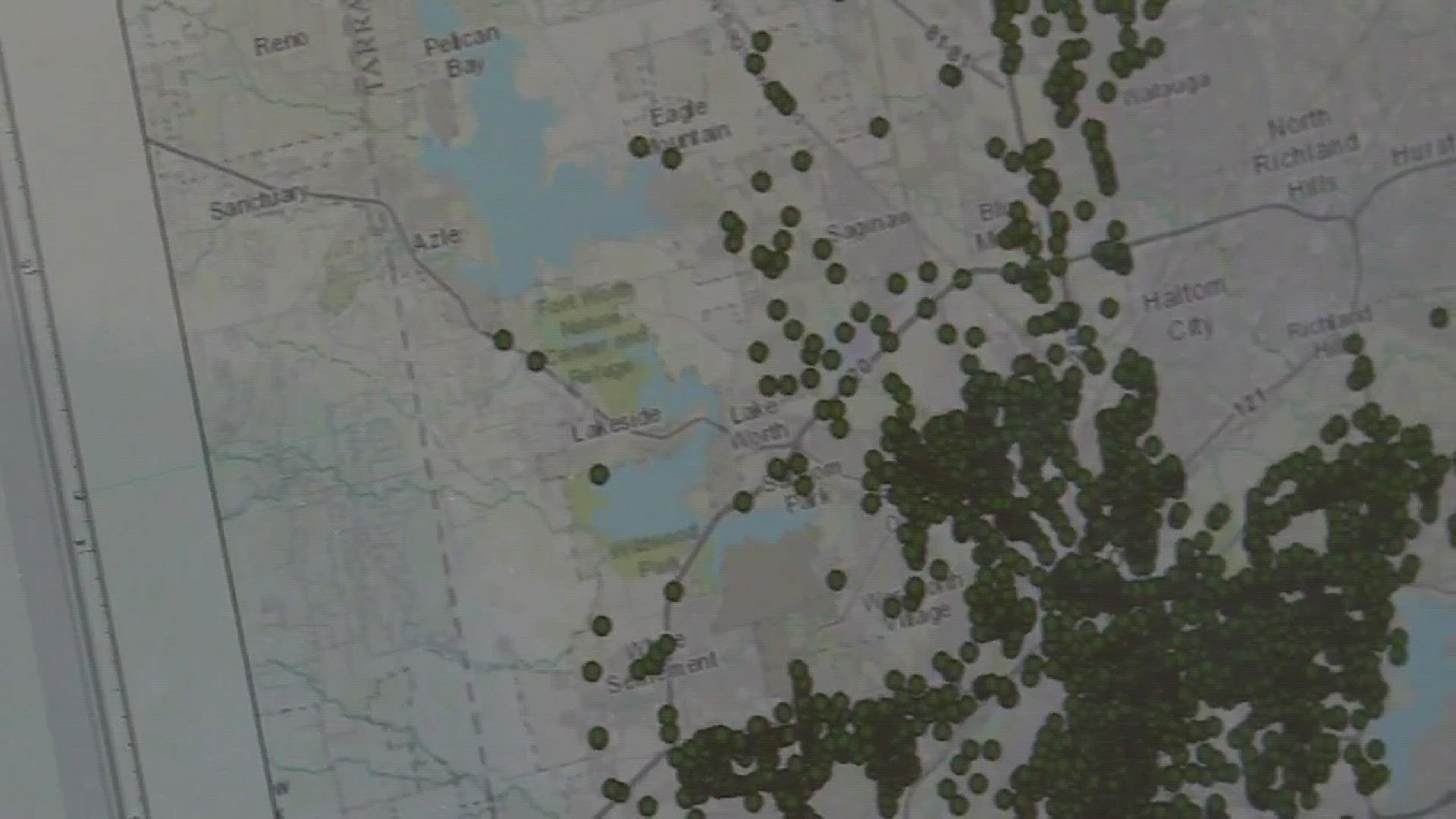FORT WORTH -- In a city that faces a substantial problem with child abuse, what if you could predict the location of abuse and stop it before it starts?
That is the very real goal of researchers at two of Fort Worth's leading institutions, Cook Childrens and TCU.
"There's a lot of hope. A lot of hope that comes from this work," said Dr. Dyann Daley, who helped lead the project.
Daley works in the Emergency Room, where she sees child abuse victims far too often.
"When these kids come in, it's heartbreaking," she said. "We see these children that have terrible injuries, and that's what got me involved in this project to begin with."
Daley and Michael Bachmann of TCU have collaborated on a cutting-edge risk terrain model that predicts child abuse and maltreatment with remarkable precision. The model is the result of years of research. Through trial and error, they isolated several key risk factors that can be measured through public data. It allows them to anticipate the location of future abuse down to an area the size of a city block.
"We found that we were able to predict over 98 percent of actual occurrences throughout the next year," Bachmann said.
That remarkable accuracy has stunned scientists. The team's research was published recently in an academic journal, and their findings helped spur a new State Senate Bill passed this week that endorses the adoption of their risks-mapping techniques statewide.
Tarrant County often leads the state in an unfortunate statistic, the number of child abuse cases. In 2015 in Tarrant County, there were more than 6,213 confirmed victims of abuse or neglect, according to state data.
The project sounds like science fiction, straight out of the movie "Minority Report," where government agents predict crime and prevent it. But this project is far different from the movies. Their computer model can't be used to arrest people before they commit crimes, and it can't even be used to identify a specific house.
"It's not about trying to find who the perpetrator is or trying to find an individual child at risk," said Daley. "It's about changing the context, changing the features of the environment, so the people living there are safe."
To address that goal, Daley and Bachmann have shared their predictive data with non-profits like One Safe Place, an organization that helps abuse victims. They are already using it to assist with targeted ad buys and to put boots on the ground in high-risk neighborhoods to help potential victims get out of dangerous situations before abuse occurs.
"You simply cannot overstate the potential value of the information," said Ken Shetter, president of One Safe Place, though he added it's up to organizations to use the data to bring about change.
"There are absolutely things we can do about it. We can change people's lives. We can save people's lives," he said.
Daley and Bachmann will now track those same high-risk areas to see which prevention measures work. They'll expand their model to other Texas cities, and they believe that with more data, an ambitious goal is truly possible -- to do away with child abuse for good.
"At the end of the day, the goal is to prevent child maltreatment," Daley said.

